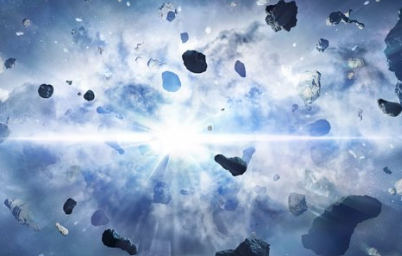Shattering Big Bang Myths: Surprising Insights Into the Origins of Matter in the Early Universe
Scientists have made groundbreaking discoveries by recreating the extreme conditions of the early universe in particle accelerators, offering fresh insights into how matter formed. Recent calculations suggest that up to 70% of certain particles may originate from later reactions, rather than the primordial quark-gluon soup formed immediately after the Big Bang. This finding challenges previous assumptions about the timeline of matter formation and could lead to a better understanding of the universe’s origins.
The early universe was unimaginably hot—about 250,000 times hotter than the core of the Sun—making it impossible for protons and neutrons to form directly. To simulate these conditions, scientists use particle accelerators to collide atoms at nearly the speed of light. By analyzing the particles created in these collisions, researchers can gain insights into the state of matter shortly after the Big Bang.
Shattering Big Bang Myths: Surprising Insights Into the Origins of Matter in the Early Universe #Science https://t.co/aqGjXyhREp
— Pure Science 🔭🔬🧪🚀🧬🦖 (@Pur3Science) August 11, 2024
Particles formed in these experiments can result from either the original quark-gluon soup or from subsequent reactions that started just a millionth of a second after the Big Bang. Recent calculations have revealed that a significant portion—up to 70%—of some particles come from these later reactions, rather than the early universe conditions previously thought to be more dominant.
This discovery enhances our understanding of matter’s origins, shedding light on how much of the matter around us was formed during the initial moments after the Big Bang versus how much emerged from later processes as the universe expanded. It implies that a considerable amount of matter formed after the early universe phase.
To accurately interpret collider experiment results, scientists must account for particles formed in these later reactions. The new calculations show that the number of such particles is much higher than initially expected, altering how scientists approach their experiments and analyze data.
The significance of later reactions in particle formation has been recognized since the 1990s. For example, particles like D mesons can interact to create charmonium, a rare particle. Recent data from experiments, including those conducted by researchers at Yale and Duke Universities, confirm that charmonium and D mesons play a more significant role than previously understood. Over 70% of measured charmonium particles could be the result of these later reactions.
Physicists recreate early universe conditions to study matter's origins. Findings reveal that 70% of particles result from later reactions.
Source: https://t.co/GM5ZKQVV7O https://t.co/Rh81qZdq6h
— Eliyahu (@RosenthalEllery) August 6, 2024
As the hot, dense soup of subatomic particles cools and expands, it does so in a fraction of the time it takes light to cross an atom. Despite the rapid expansion, the collisions produce a substantial amount of charmonium, providing new insights into the origins of matter and bringing scientists closer to understanding the early universe.
Key Points:
i. Scientists have recreated early universe conditions in particle accelerators, revealing that up to 70% of certain particles may come from later reactions, not just the initial quark-gluon soup.
ii. The early universe was extremely hot, making it impossible for protons and neutrons to form directly; particle accelerators simulate these conditions by colliding atoms at near-light speeds.
iii. Recent calculations show that a significant portion of particles results from reactions starting a millionth of a second after the Big Bang, challenging previous assumptions about matter formation.
iv. The findings highlight the importance of accounting for later reactions when interpreting collider experiments, suggesting that much of the matter around us formed later than previously thought.
v. Data from recent experiments confirms the significant role of particles like charmonium and D mesons, providing new insights into the formation of matter and the early universe.
TL Holcomb – Reprinted with permission of Whatfinger News



